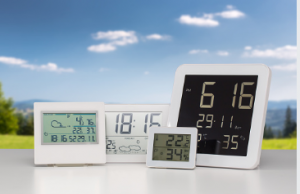What does a weather station do? A weather station is a scientific device that measures atmospheric conditions to create a weather forecast. They also study climate and weather patterns. To understand the benefits of weather stations, you should first learn what they measure. A weather station collects four main measurements temperature, wind speed, humidity, and barometric pressure. In this article, we’ll cover each of these in detail. You can find one at a hardware store or online.
 Wind speed
Wind speed
How does a weather station from https://www.instrumentchoice.com.au measure wind speed? There are several types of wind speeds, and these are described in the following paragraphs. The instrument used to measure wind speed is called an anemometer. Wind speed is averaged over 1 or 2 minutes. In addition to average wind speeds, weather stations also report wind gusts and peak winds. For more information, check out this tutorial:
Wind speed is measured by taking the two values associated with long and short wind barbs. When you find these values, calculate the wind speed and direction. You can also use directional hint lines to estimate angles. Once you have the information, you can analyse it more accurately. This information is very helpful for forecasting and planning. When you can see the wind speed and direction on your screen, you’ll be able to estimate wind speed and direction.
The traditional way to measure wind speed is to use a cup anemometer. It consists of three or four cups placed on opposite sides of a central mast. When the wind blows over the cups, the wind turns them and counts the number of times they rotate. The traditional meteorologist had to count all the cups every minute. Still, with modern instruments, it’s possible to count the rotations of each cup in a single second.
The wind speed graph on a weather station is a helpful tool for forecasting. You can find the wind speed graph on a weather station in a home weather station. These personal weather stations have the same features as commercial units, measuring humidity and indoor/outdoor temperatures. In addition, a digital station will also have atomic time and display forecast tendency indicators. These indicators can help you predict upcoming weather conditions.
Temperature
What does “temperature at a weather station” mean? It’s the high and low temperatures that are recorded daily. These temperatures are known as daytime highs and night-time lows. They’re also measured in millibars and Fahrenheit. The temperature at a weather station can provide a more accurate daily average temperature than other weather measurements. Here’s how it’s measured:
Observed temperatures at weather stations are usually far from population centres, so they’re unlikely to represent true population averages. Also, because weather stations are usually situated at airports, they may be more distant from cities and other population centres. It means that temperatures at weather stations in distant regions are more extreme than those in the centre of cities. Luckily, the ocean moderates temperature, so it’s difficult to overestimate the impact of temperature on health.
Weather stations measure air temperature with a thermometer. The thermometer is located inside a sensor housing and records indoor and outdoor temperatures. Another thermometer, called a hygrometer, measures moisture in the air. If the air is too moist, it’s called humidity. Generally, weather stations measure air temperature once an hour, but some can measure it daily. And some weather stations are located in harbours to measure tides.
The temperature at a weather station should be at least 50 feet away from the nearest paved surface. In addition to this, it’s recommended to use a radiation shield. To purchase a radiation shield, visit Ambient Weather. Alternatively, you can use a sheet of aluminium. Whatever you do, make sure it shields the thermometer from the sun—the more accurate the thermometer, the better.
Humidity
Relative humidity is another variable that meteorologists use to describe moisture. It is the amount of moisture in air based on temperature and dew point. Depending on humidity, the difference between temperature and dew point can vary by 5 degrees or more. Another useful moisture variable is the dew point, which tells meteorologists about the moisture content in the air. Although this is a more complicated calculation, it can help understand why relative humidity is useful to meteorologists.
